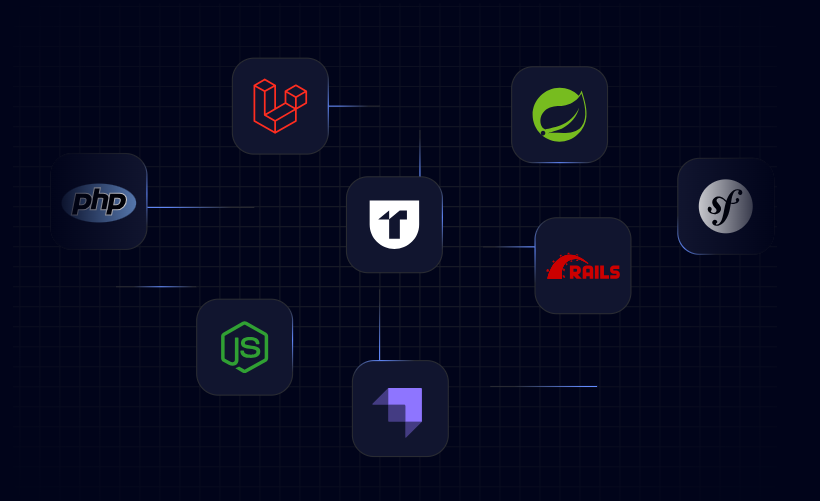So, as you all know, my blogs are for everyone. Even if you want to explain to your non-tech friend, send this blog and thank me later!
RESTful APIs, often referred to as REST APIs, are a crucial component of modern software development. Despite the name, they don't actually "rest." Instead, they adhere to a set of principles that govern their behavior and interactions with other software systems.
Okay.
Let me try again... 👇
Have you ever ordered food online? That seamless experience, where you tap a few buttons and bam! Pizza 🍕 arrives at your doorstep? Well, there's a secret ingredient behind that magic – REST APIs (Application Programming Interfaces). But unlike your pizza, understanding REST APIs might seem...well, a little dry.
Let's Start with some Basics!
An API, or Application Program Interface, acts as a bridge that enables different software systems to communicate and share information. This seamless integration is fundamental to the functionality of numerous digital services, from weather apps to social media log-ins.
Think of it as the language spoken by apps to talk to each other.
Examples of APIs in Everyday Applications
APIs are ubiquitous in the digital world and are seamlessly integrated into various applications that we use daily. Here are some examples:
- Many weather apps use APIs to fetch real-time weather data from external sources and display it to users.
- When you use your Google or Facebook account to log in to a different app or website, you're essentially using their APIs for authentication.
- Travel and booking apps often integrate APIs from airlines, hotels, and other travel service providers to retrieve pricing and availability data.
- The Twitter API allows developers to interact with Twitter's features, such as accessing tweets, posting tweets, and managing user accounts.
Types of APIs
APIs come in various types, each serving specific purposes and catering to different integration needs. Some common types of APIs include:
- RESTful APIs - Representational State Transfer APIs, which adhere to specific architectural principles for interaction and data exchange.
- SOAP APIs - Simple Object Access Protocol APIs, which use XML for message format and can be more rigid in structure compared to REST APIs.
- GraphQL APIs - A query language for APIs that provides a more flexible, efficient, and powerful alternative to REST.
For a comprehensive journey through the evolution of APIs, from their early days to the modern RESTful and GraphQL standards, check out this insightful article on Treblle Blog: From SOAP to REST: Tracing The History of APIs. It offers a deep dive into how APIs have become the backbone of digital connectivity, revolutionizing software development and integration across industries.
The Anatomy of a REST API
Now, onto REST APIs. REST stands for "Representational State Transfer," but don't let the name intimidate you. It's just a fancy way of saying they follow a set of rules that keep things organized and efficient. It is a web-based application programming interface adhering to the REST architectural style, facilitating seamless interaction with RESTful web services. Coined by computer scientist Roy Fielding, REST stands for Representational State Transfer.

Let's understand it with an example. Let's say you're on a date (only imagine) at a fancy restaurant called Treblle Restaurant. You (the client) want to order food (the resource). The waiter (the API) acts as the middleman between you and the kitchen (the server).
Here's how it goes down:
- Appetizer Time (GET Request): You GET hungry and browse the menu
(the API). You send a GET request to the waiter(API), specifying what you want to see – the appetizer list(resource). The waiter fetches the list from the kitchen(server)and brings it to you(client). Maybe you see Bruschetta on the menu(resource)and decide that's what you want.
GET /menu/appetizers // This is the request you send to the API- Main Course Order (POST Request): You've decided on Bruschetta, so you tell the waiter (POST request). This request includes the specific appetizer
(resource)and any preferences(like extra cheese!). The waiter takes your order to the kitchen (server), which prepares your Bruschetta.
POST /menu/appetizers/bruschetta // This sends the order with your preferences- Devouring the Dish (PUT/PATCH Request): Let's say you only want half the Bruschetta. You can use a PUT request to tell the kitchen
(server)to replace the entire dish with just half. If you just want a little less cheese, you can use a PATCH request for a more specific modification.
PUT /menu/appetizers/bruschetta/half // Replaces the entire dish
PATCH /menu/appetizers/bruschetta/cheese=less // Modifies a specific part- Dessert Time (DELETE Request): You're done with the Bruschetta, so you inform the waiter (DELETE request). The waiter relays the message to the kitchen
(server), which might(or might not)clean your plate(release the resource).
DELETE /menu/appetizers/bruschetta // Informs the server you're doneNow, every messenger expects a response, and they are quite picky about it. Enter the mystical world of HTTP status codes:
200 OK: Everything went well, info found.201 Created: New info was created due to your request.204 No Content: Request successful but no info to return.404 Not Found: The requested info doesn't exist.
Phew!
That was a delicious explanation (and hopefully not too filling). Remember, REST APIs follow these core principles:
- Stateless: The waiter
(API)doesn't remember your previous orders(requests). Each request is independent. - Client-Server: You
(client)tell the waiter(API)what you want, and the kitchen(server)prepares it. - Standardized Messages: Everyone
(client, API, server)speaks the same language (like HTTP verbs – GET, POST, PUT, DELETE) to understand each other.
So, the next time you order food online or use any app that interacts with data, remember the tireless hustle behind the scenes – the REST APIs, working tirelessly to bring you the information or service you requested. And who knows, maybe now you'll appreciate that extra drizzle of olive oil on your Bruschetta a little more!
How Treblle Can Help You Observe Your REST APIs
Alright, now that we've got a good grasp of REST APIs, let's talk about how Treblle can help you observe your APIs.
API Monitoring and Observability
With Treblle, monitoring your REST APIs becomes a piece of cake. You get access to a treasure trove of data points for every request, allowing you to track performance, user behavior, and more. It's like having a secret sauce that gives you insights into how your APIs are performing in the wild.
Discover how to keep a pulse on your API's health and performance by exploring our API Observability.

Auto-generated API Docs
Say goodbye to manual documentation headaches! Treblle automatically generates comprehensive documentation for your APIs, complete with explanations, responses, error codes, and request examples. It's like having a personal assistant who takes care of all your paperwork while you focus on the fun stuff.
For a closer look at how this works, feel free to explore our API Documentation.

Easy Integration
Integrating Treblle into your Preferred Language APIs is as easy as pie. Just install the Treblle (Any Language) package into your project, create a free account, and voila! You're all set to unlock a world of observability features. It's like adding a turbocharger to your API monitoring setup.
Our open-source SDKs let you seamlessly add Treblle to your APIs. We support 20+ platforms and API gateways, including JavaScript, PHP, Azure, MuleSoft, Laravel, .NET, Cloudflare, Python, etc.

So, to answer our initial question: Do REST APIs rest?
Absolutely not!
They are the tireless workhorses behind the scenes, facilitating communication between applications and making our digital lives a whole lot easier. Whether you're ordering pizza, booking a flight, or checking the weather, REST APIs are the invisible threads that connect us to the vast world of information.
This intricate web of connections they weave enables a level of convenience and efficiency we often take for granted. As we navigate through our digital routines, barely noticing the complexity behind our simplest actions, it's worth pausing to appreciate these unsung heroes.
So, the next time you click, swipe, or tap, remember the silent guardians of the digital realm—REST APIs. They never rest, so our digital experiences can remain as seamless and magical as a wish granted by a genie. In this vast, interconnected world, they are the true magicians, turning code into convenience, data into decisions, and interactions into opportunities.






